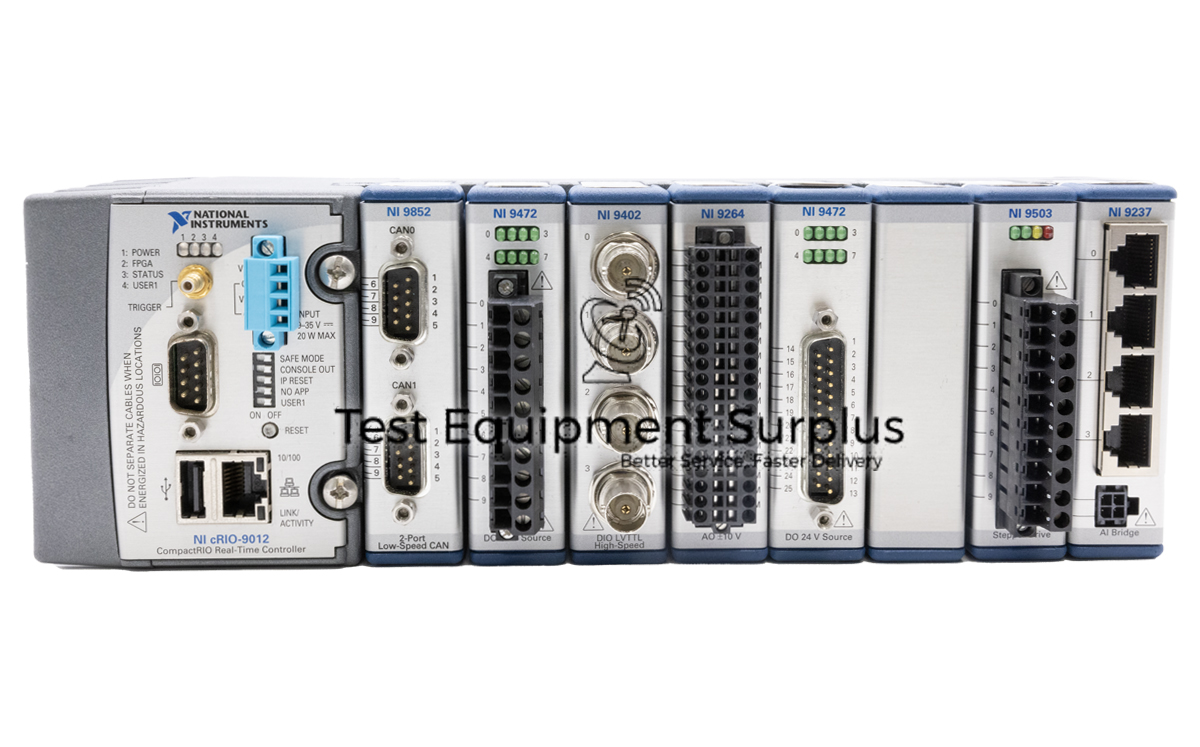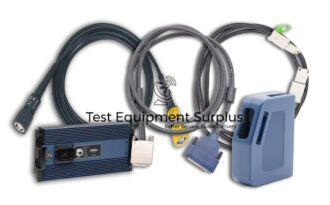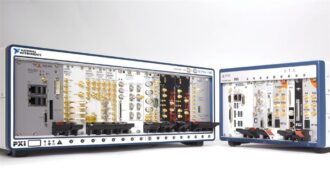Description
The National Instruments cRIO-9022 CompactRIO Controller, with part number 780718-01, is a robust member of the CompactRIO PAC (programmable automation controller) platform, equipped with a 533 MHz Free-scale MPC8347 processor to handle demanding applications. It boasts 256 MB of DDR2 RAM for efficient processing and 2 GB of nonvolatile storage for program retention and data logging.
To ensure operational stability, this controller requires a 35 VDC external power supply, and features both a main power input (V1) and a subordinate power input (V2), with the ability to draw power from the source with the higher voltage, protected by one layer of reverse-voltage protection. At startup, the system clock is synchronized with an internal high-precision real-time clock, maintaining accurate time-stamping for data.
The cRIO-9022 is designed with connectivity in mind, featuring a USB port for external storage devices and an RS-232 serial port for connecting input or display devices, complemented by two Ethernet ports for network communication. Moreover, it adheres to EMC standards for electrical equipment used in monitoring, control, and laboratory environments, ensuring compliance with regulatory requirements.
| Specification | Detail |
|---|---|
| Product | National Instruments cRIO-9022 CompactRIO Controller |
| Part Number | 780718-01 |
| Platform | CompactRIO PAC (programmable automation controller) |
| Processor | 533 MHz Free-scale MPC8347 |
| Memory | 256 MB DDR2 RAM |
| Storage | 2 GB nonvolatile |
| Power Supply | Needs a 35 VDC external power supply |
| Power Inputs | Main power input (V1) and subordinate power input (V2) |
| Reverse-Voltage Protection | Yes, one layer |
| System Clock | Synchronizes with the internal high-precision real-time clock at startup |
| USB Port | Yes, for external storage devices |
| Serial Port | RS-232 |
| Ethernet Ports | Two |
| EMC Standards Compliance | Yes, for monitoring, control, and lab use |
Question 1: What type of processor is integrated into the National Instruments cRIO-9022 CompactRIO Controller, and how much DDR2 RAM does it have for processing tasks?
Answer 1: The National Instruments cRIO-9022 CompactRIO Controller is integrated with a 533 MHz Free-scale MPC8347 processor and has 256 MB of DDR2 RAM for processing tasks.
Question 2: What is the processing capability and memory specification of the National Instruments cRIO-9022 CompactRIO Controller, and how does it ensure accurate time-stamping at startup?
Answer 2: The National Instruments cRIO-9022 CompactRIO Controller is equipped with a 533 MHz Free-scale MPC8347 processor and 256 MB of DDR2 RAM, and it ensures accurate time-stamping at startup by synchronizing the system clock with an internal high-precision real-time clock.
Question 3: What processor is found in the National Instruments cRIO-9022 CompactRIO Controller, and how much DDR2 RAM and nonvolatile storage does it have?
Answer 3: The National Instruments cRIO-9022 CompactRIO Controller is equipped with a 533 MHz Free-scale MPC8347 processor, 256 MB of DDR2 RAM, and 2 GB of nonvolatile storage.
Question 4: What are the specifications and power requirements of the National Instruments cRIO-9022 CompactRIO Controller, and how does it support connectivity and comply with EMC standards?
Answer 4: The National Instruments cRIO-9022 CompactRIO Controller features a 533 MHz Free-scale MPC8347 processor, 256 MB of DDR2 RAM, 2 GB of nonvolatile storage, and requires a 35 VDC external power supply with main and subordinate power inputs for operational stability, while connectivity is supported through a USB port, an RS-232 serial port, and two Ethernet ports, and it complies with EMC standards to meet regulatory requirements for electrical equipment in monitoring, control
Question 5: Considering its features and specifications, what types of applications is the National Instruments cRIO-9022 CompactRIO Controller best suited for?
Answer 5: The National Instruments cRIO-9022 CompactRIO Controller is best suited for demanding industrial and laboratory automation applications that require robust processing power, such as advanced control, monitoring systems, data logging, and real-time data acquisition, where reliable connectivity, precise time-stamping, and adherence to EMC standards are critical.




